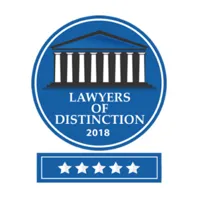When we think about criminal trials, it’s pivotal to understand the sequence of events and what each phase entails. From the initial arrest and booking to the final sentencing hearing, each step plays a vital role in the justice system. We’ll touch on everything from jury selection to closing arguments, shedding light on the procedures and expectations that define a trial. How does the judge guarantee fairness? What strategies do the defense and prosecution use? Join us as we navigate these questions and more, exploring the intricacies of criminal trials and their impact on all parties involved.

Key Points
- Jury selection aims to establish an impartial and diverse decision-making body.
- Opening statements outline each side’s narrative and set the stage for the trial.
- Evidence presentation includes witness testimonies and physical evidence introduced by both sides.
- Closing arguments summarize cases and urge the jury towards a specific verdict.
- The judge oversees the trial, provides instructions to the jury, and ensures legal procedures are followed.
Arrest and Booking
After an arrest, individuals are transported to a police station for the booking process, which is essential in the criminal justice system. We can understand that this step is pivotal for establishing a permanent record of the arrest. During booking, standard procedures like fingerprinting and photography are conducted. These methods aren’t only about creating records but also about guaranteeing that the person’s identity is accurately documented. This meticulous process helps maintain the integrity of the criminal justice system.
At this point, the arrested individual is also placed in jail holding. This temporary detention period is crucial as it provides the necessary time for the system to prepare for the next steps. It’s important to know that within 48 hours, the individual will appear before a judge. This timeframe ensures that the justice process moves promptly and fairly.
During this appearance, the accusation initiation involves the police investigation and submission of findings to prosecutors, setting the stage for the trial.
The booking process, with its detailed documentation and temporary detention, sets the stage for what follows. It guarantees that everyone involved—law enforcement, the judiciary, and the defendant—is on the same page. By understanding this, we can see how these steps contribute to a fair and orderly criminal justice process.
Initial Court Appearance
At the initial court appearance, the judge will inform us of the charges and help us grasp our legal rights. This pivotal step involves deciding whether to enter a plea and whether bail will be set, determining if the defendant can be released until the trial. Grasping these elements is vital as they greatly influence the direction of our legal proceedings.
It’s also important to acquaint yourself with courtroom processes and the specific laws involved in your case, as these can impact the decisions made during the initial appearance.
Charges and Rights Explanation
The initial court appearance, often a defendant’s first encounter with the judicial process, serves a critical function in outlining the charges and explaining legal rights. When we step into that courtroom, it’s not just about facing a judge; it’s about understanding the full scope of the criminal charges against us. The judge will meticulously detail the accusations, ensuring we comprehend each charge.
This moment isn’t just procedural—it’s foundational. The judge will also explain our essential legal rights, such as the right to remain silent and the right to an attorney. These rights are pivotal, empowering us to navigate the complexities of the legal system. Let’s remember, understanding our charges and rights isn’t merely about compliance; it’s about making informed decisions that could impact the entire course of our case.
The gravity of the situation becomes clear in this initial appearance. It sets the stage for everything that follows in our legal journey. By grasping the charges and our rights, we’re better positioned to engage with our defense attorney and strategize effectively. This knowledge fosters a sense of belonging in the legal process, ensuring we’re not just passive participants but active, informed individuals in our defense.
Bail and Release Options
When we’re at our initial court appearance, one of the pivotal decisions made is about bail and our release options. The judge will set bail based on factors like the severity of the offense and our perceived flight risk. Understanding our options can help us and our loved ones navigate this critical stage more confidently.
There are several types of bail options available to us. A surety bond involves a bail bond company posting the full bail amount on our behalf, which often requires a non-refundable fee. This can be a viable option if we can’t afford to pay the full amount ourselves.
On the other hand, a cash bond requires us to pay the entire bail amount upfront in cash. The good news is that this amount may be refunded once our case concludes, provided we comply with all court requirements.
Another option is a personal bond, which allows us to be released without posting any bail. However, we must meet specific conditions set by the court, such as attending all scheduled court appearances and possibly adhering to travel restrictions. Each of these release options has its own set of advantages and requirements, and understanding them can make a significant difference in our legal journey.
Plea Bargaining
Now, let’s explore plea bargaining, where defendants negotiate with prosecutors to reduce charges and avoid the pitfalls of a full trial. This process often results in more lenient sentences, making it an attractive option for those facing severe penalties. By securing a favorable outcome through a guilty plea, both the defendant and the court system can achieve a quicker and more efficient resolution.
Additionally, criminal defense attorneys often use their in-depth understanding of criminal law to navigate the complexities of plea negotiations effectively. This guarantees that clients receive the best possible outcome given the circumstances.
Negotiating Charge Reductions
Traversing plea bargaining can profoundly impact the trajectory of a criminal case. When considering a plea bargain, we need to understand how negotiating charge reductions works. Criminal defense attorneys play a pivotal role in this process, evaluating the strengths and weaknesses of the case to secure better outcomes for defendants.
First, let’s recognize that a plea bargain can lead to reduced charges, helping us avoid the uncertainties of a trial and potentially harsher penalties. Defendants often start with a plea of not guilty or no contest, but they’ve the option to change their plea to guilty if it means leniency in sentencing. This strategic flexibility is vital.
Negotiating involves detailed discussions about the case’s weaknesses. Our attorneys analyze the evidence, witness credibility, and potential legal defenses to leverage a more favorable deal. The goal is to resolve the case without the need for a trial, which can be a lengthy and stressful process.
It’s essential that we, as defendants, fully grasp the implications of a plea bargain on our legal rights and potential outcomes. By working closely with our defense attorneys, we can navigate this intricate terrain and make informed decisions that will shape our futures.
Avoiding Trial Pitfalls
The maze of a criminal trial can be a challenging prospect, making the art of plea bargaining an attractive alternative. By negotiating a plea deal with the prosecution, we can sidestep the uncertainties and complexities of trial proceedings. Plea bargaining offers us the chance to enter a guilty plea or no contest, potentially securing a lesser charge or sentence.
Opting for trial instead of accepting a plea bargain carries the risk of facing harsher penalties if found guilty. Changing our plea to guilty during the plea bargaining process can sometimes lead to leniency in sentencing, providing a more favorable outcome. Successful plea bargaining not only resolves the case without a trial but also saves time and resources for both the defendant and the court.
Plea Bargaining Insights
| Aspect | Advantages | Considerations |
|---|---|---|
| Time Efficiency | Resolves cases quickly | May feel rushed |
| Resource Savings | Saves court resources | Requires skilled negotiation |
| Outcome Control | Predictable result | Potential for better or worse |
| Leniency | Possible reduced sentence | Depends on prosecution’s terms |
| Risk Management | Avoids trial uncertainties | Guilty plea impacts future |
Potential Sentencing Leniency
When considering the option of plea bargaining, potential sentencing leniency stands out as a significant advantage. By engaging in plea deals, defendants can plead guilty to lesser charges or offenses, often resulting in reduced penalties. This means lighter fines, shorter probation terms, or community service instead of jail time.
The efficiency of resolving cases this way is appealing to prosecutors, who aim to avoid the lengthy and uncertain trial process.
For us, the appeal of plea bargaining is clear: it offers a controlled and predictable outcome. Rather than facing the unpredictable nature of a trial and the possibility of harsher sentencing, we can negotiate terms that provide a more lenient sentence. Judges often look favorably upon defendants who demonstrate cooperation, remorse, and a willingness to take responsibility, further enhancing the chances for sentencing leniency.
Plea deals create a sense of resolution and closure, allowing us to move forward without the looming anxiety of a full trial. They offer a path to mitigate the consequences of our actions while acknowledging our responsibility. In the context of a criminal trial, plea bargaining is a strategic option that can lead to more manageable and less severe outcomes.
Pretrial Motions
Pretrial motions play a central role in shaping the landscape of any criminal trial. These legal requests, made by either the defense or prosecution, seek the judge’s rulings on specific issues before the trial begins. By addressing these matters through pretrial motions, we can set the stage for what evidence is admissible and outline the legal arguments that will be made.
During pretrial hearings, both sides present arguments and evidence supporting their motions. Requests can range from suppressing evidence to dismissing charges, changing venues, or clarifying legal procedures. Each of these motions is vital because they define the trial’s scope and parameters. For example, a successful motion to suppress evidence can greatly influence the trial’s outcome by excluding pivotal information.
Here’s a snapshot of common pretrial motions and their potential impacts:
| Pretrial Motion | Impact on Trial |
|---|---|
| Suppress Evidence | Excludes specific evidence, potentially weakening a case |
| Dismiss Charges | Eliminates certain charges, narrowing the trial’s focus |
| Change Venue | Moves trial to guarantee impartial jury |
| Clarify Procedures | Establishes clear rules for conducting the trial |
Preliminary Hearings
Preliminary hearings serve as a crucial checkpoint in the criminal justice process, guaranteeing there’s adequate evidence to warrant a trial. During these hearings, the judge conducts a thorough assessment of the prosecution’s evidence and witness testimony. This isn’t just a formality; it’s an essential step where the prosecution must demonstrate probable cause—that is, sufficient reason based on evidence to believe the defendant committed the alleged crime.
We can think of preliminary hearings as a filter, where weak cases are sifted out, preventing unnecessary trials.
The defense also plays a significant role here, challenging the prosecution’s evidence and highlighting any weaknesses. This is our opportunity to scrutinize the evidence and question the reliability of witnesses presented by the prosecution.
The judge’s assessment at this stage is crucial. They weigh the presentations from both sides to determine if the case should proceed. If probable cause is established, the case moves forward to trial, where the details will be fully examined. If not, the charges can be dismissed, sparing everyone involved from a lengthy and costly trial.
Preliminary hearings, thus, help guarantee that only cases with a solid foundation move forward, maintaining the integrity of our judicial process.
Grand Jury Indictment
Now, let’s examine the grand jury indictment process, a critical juncture in felony cases.
We’ll explore how a grand jury reviews evidence presented by the prosecutor to decide whether to issue a “true bill” or a “no bill” based on the sufficiency of evidence.
Understanding these factors helps us appreciate the balance between moving a case forward and protecting the defendant’s rights.
Grand Jury Process
Before formal charges are brought against someone accused of a felony, the grand jury process serves as an essential checkpoint. In Texas Criminal cases, a grand jury is composed of 12 to 15 citizens who carefully evaluate the evidence presented by the prosecutor. This process is especially significant in felony cases, as it helps guarantee only legitimate charges proceed to trial.
The grand jury listens to the prosecutor’s presentation, which typically includes witness testimonies and other pertinent evidence. Their role isn’t to determine guilt or innocence but to decide if there’s enough probable cause to move forward with formal charges. If they believe the evidence is sufficient, they issue a “true bill,” leading to formal charges.
Conversely, if they find the evidence lacking, they issue a “no bill,” and the accused isn’t charged.
This procedural step is crucial for maintaining the integrity of our judicial system. It assures us that only cases with a reasonable basis proceed, preventing individuals from facing unfounded accusations.
Indictment Decision Factors
When evaluating whether to indict a defendant, grand jurors must meticulously weigh several key factors. We need to remember that the grand jury’s role is crucial in deciding if there’s enough evidence to formally charge someone with a crime. This process ensures that indictments aren’t based on unfounded accusations.
To make a fair decision, grand jurors consider the following factors:
| Factor | Description | Importance |
|---|---|---|
| Probable Cause | Is there enough evidence to suggest the defendant committed the crime? | High |
| Evidence Quality | How credible and substantial is the prosecution’s evidence? | Critical |
| Witness Credibility | Are the witnesses reliable and their testimonies consistent? | Significant |
| Legal Standards | Does the case meet the legal criteria for an indictment? | Essential |
| Safeguards | Does the evidence protect the accused from baseless charges? | Crucial |
True Bill Vs. No Bill
The decision between a True Bill and a No Bill by a grand jury is a critical juncture in the criminal justice process. When a grand jury issues a True Bill, it means they’ve found sufficient evidence to indict a suspect on criminal charges, allowing the case to proceed to trial. On the other hand, a No Bill means the grand jury has determined there isn’t enough evidence to support an indictment, resulting in the dismissal of the case.
This decision is pivotal because it sets the course for the legal proceedings that follow. A True Bill leads to the filing of a formal charging document, signifying that the suspect will face trial.
Conversely, a No Bill means the suspect won’t be formally charged, effectively halting the prosecution’s efforts.
Understanding the grand jury’s role in this process is essential for anyone maneuvering the criminal justice system. Their decision impacts not just the accused but also victims and the community. By knowing what a True Bill or No Bill signifies, we can better grasp the complexities of legal proceedings and the importance of evidence in seeking justice.
Jury Selection
Jury selection, a critical phase in any criminal trial, establishes the foundation of an impartial and diverse decision-making body. We must understand that the process begins with the random selection of 12 jurors from a larger pool, guaranteeing a broad spectrum of perspectives.
During this phase, the prosecution and defense engage in a meticulous questioning process, often referred to as voir dire, to evaluate each potential juror’s impartiality and suitability for the case.
Our goal here is to construct a jury that’s fair and unbiased, capable of listening to the evidence without preconceived notions. Both sides have the opportunity to challenge potential jurors if there are valid reasons to believe they can’t be objective. These challenges help filter out biases that could sway the criminal case unfairly.
The ultimate aim is to finalize a jury composed of individuals who can objectively assess the evidence and render a verdict based strictly on the law. This careful selection process safeguards that the decision-making body is both balanced and representative, fostering a sense of justice and fairness. By understanding these steps, we recognize the importance of each juror’s role in the broader judicial system.
Trial Proceedings
Exploring the complexities of trial proceedings reveals the procedural choreography that underpins our criminal justice system. The trial begins with jury selection, a pivotal process where both the prosecution and defense scrutinize potential jurors to guarantee a fair and impartial panel.
Following this, opening statements set the stage, outlining each side’s narrative and what they intend to prove.
Evidence presentation is the heart of the trial. Witnesses are called to testify, providing firsthand accounts that either support or challenge the case. Physical evidence is meticulously introduced to strengthen these testimonies. Throughout this phase, both sides engage in strategic questioning, aiming to enhance their arguments while undermining the opposing side’s credibility.
As the trial progresses, the judge plays an important role, overseeing proceedings to ensure adherence to legal standards. The judge also provides instructions to the jury, clarifying legal principles and guiding their deliberations.
Closing arguments mark the culmination of the trial, with both sides summarizing their cases and urging the jury towards a favorable verdict. This final appeal is a persuasive effort to synthesize the presented evidence and leave a lasting impression.
Ultimately, the jury’s verdict concludes the trial, determining guilt or innocence and setting the stage for sentencing or acquittal.
Sentencing Hearing
Finding your way through the sentencing hearing involves grasping the pivotal moment when the judge decides the convicted individual’s fate. It’s a vital juncture where justice, rehabilitation, and public safety intersect. During the sentencing hearing, the judge weighs factors like the severity of the offense, prior criminal record, and any mitigating or aggravating circumstances.
We need to understand that this is also the time when victims can voice their experiences through a victim impact statement. This powerful testimony allows them to express how the crime has affected them personally and advocate for a specific outcome, adding a human element to the proceedings. The judge listens to these statements carefully, considering them alongside other presented factors.
Types of sentences imposed can vary widely, from probation, fines, and community service to imprisonment. The judge’s decision aims to balance the need for punishment with opportunities for rehabilitation and ensuring public safety.
As we navigate this process together, it’s crucial to recognize that the sentencing hearing isn’t just about punishment but also about seeking a fair resolution that acknowledges all parties involved. Let’s stay informed and engaged, ensuring that justice is served thoroughly.
Appeals Process
Navigating through the appeals process is an essential step when seeking to challenge a criminal conviction. It’s common knowledge that achieving justice is a shared objective, and understanding the grounds for appeal can make all the difference. Common grounds include errors in trial procedures or claims of ineffective assistance of counsel. Such errors can greatly impact the fairness of the original trial.
During the appellate court process, a higher court reviews the trial record meticulously to identify any legal errors. This process doesn’t involve a new trial but rather a careful examination of what transpired in the lower court. The possible outcomes are varied: the court might uphold the conviction, order a new trial, or modify the sentence. Each decision is a crucial step toward ensuring justice.
We must also consider habeas corpus petitions, which challenge the legality of an individual’s imprisonment post-trial. These petitions can provide another avenue for relief if the initial appeal doesn’t yield a favorable result.
Ultimately, the Supreme Court serves as the final arbiter, providing a definitive resolution to the legal issues raised. Together, we navigate these intricate processes to seek the justice we all deserve.
Frequently Asked Questions
What to Expect During Trial?
During trial, we’ll witness both sides present evidence, call and cross-examine witnesses, and make arguments. The judge oversees everything, ensuring fairness. Jurors deliberate privately to decide the verdict. Closing arguments will aim to persuade us.
What Do You Wear to a Criminal Trial?
Let’s dress conservatively in dark, solid colors to show respect for the court. Avoid flashy or revealing clothes. Choose well-fitting, comfortable attire and closed-toe shoes. Minimal accessories help us maintain a serious, respectful appearance.
What Are the Three Essential Elements of a Criminal Trial?
Imagine the courtroom as a stage. We’ve got three main acts: the prosecution proving guilt beyond a reasonable doubt, the defense presenting its case, and the judge or jury weighing the evidence to deliver a verdict.
What Is the First Thing in a Criminal Trial?
The first thing in a criminal trial is the arraignment. Here, we learn the charges against us, enter a plea, and the judge sets bail conditions. Understanding our rights at this stage is essential for our defense.
Takeaway
Coincidentally, just as we’ve walked through each step of a criminal trial, you now understand the complexities of the legal process. From arrest to the appeals process, every phase plays an essential role in ensuring justice. It’s important to grasp these details because being informed can greatly impact outcomes. Let’s remember, the system isn’t flawless, but knowledge empowers us to navigate it effectively. Stay vigilant, and always seek legal counsel when necessary.







